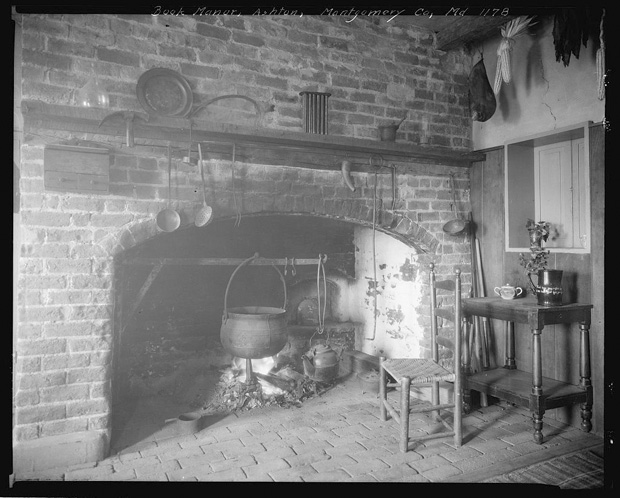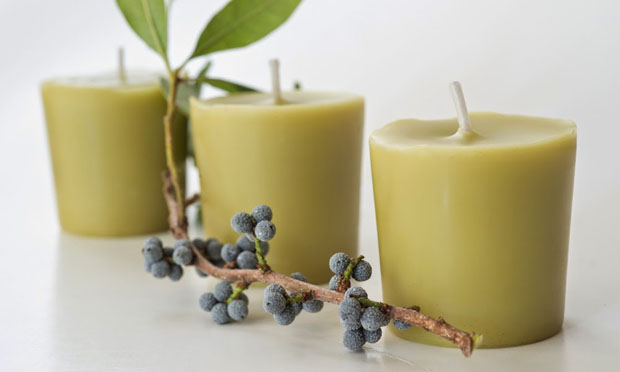If You Can’t Stand the Heat
03 Jan 2017
A glimpse at early Charleston kitchens
By SUZANNAH SMITH MILES
Photos Library of Congress

As we know, the Civil War officially began here in Charleston with the firing on Fort Sumter on April 12, 1861. What is little known is that the war almost got an accidental start a few weeks earlier. On April 3, a schooner from Boston, the Rhoda A. Shannon captained by Joseph Marts, mistook the entrance into Charleston harbor for the entrance into Savannah, their intended port. As she passed the fortifications on Morris Island, a shot ran across her bow. Thinking he was being asked to identify himself, in customary fashion Captain Marts ran up the ensign, the American flag. He had no idea the war was imminent.
The shot had been fired from South Carolina artillerists on Morris Island, who had been anxiously anticipating the arrival of a ship carrying armed reinforcements for the Federal garrison at Fort Sumter. Seeing the flag and thinking that this was "it," the Morris Island artillery took aim and fired again. Luckily, they missed. Captain Marts wisely turned the Shannon about and fled the scene.
This story is rather wonderful in itself, but what is particularly intriguing is that the Shannon was a special kind of schooner, one especially fitted to carry ice. She was part of what was then called the “frozen water” trade, a big business in the days before refrigeration. Ice was a treasured commodity in the South. Without it, how could people keep their butter cold, their food preserved and ice their juleps?
Today, to fill a glass with ice, all most of us have to do is place the glass in that magic place on the front of the refrigerator door, push, and, voila! It’s cocktail time. Yet it wasn’t all that long ago that a refrigerator was called an “ice box”, and the ice man would come to Lowcountry kitchens on a regular basis.
We take ice for granted now, just as we do the disposals, microwave ovens and Cuisinarts that are part of modern food preparation. While much has been written about Charleston’s well-deserved culinary heritage, of equal interest is a look at the incredibly basic kitchens where these often elaborate dishes were prepared.
One 18th century writer describing an average plantation dinner noted that on the table (at the same time) were “several kinds of fish and pickled crab, a fine ham, an excellent shoulder of mutton, greens, and fine boil'd Rock fish,” followed by pudding and cheese. All was washed down with “good Porter Beer, Cyder, Rum and Brandy Toddy.” Even given the luxury of a battery of servants, that was quite a meal for any cook to bring to the table. Today, with all the modern conveniences, it would still take hours to prepare.
Philip Bardin, Charleston’s internationally-recognized executive chef (famed for introducing grits to the menu as a dish not only reserved for breakfast), says that today's holiday feasts are the only time we modern cooks get a glimpse of what it was like to produce a meal in earlier times.
"Everything back then was completely and totally time consuming," explains Bardin, who is now drawing diners to the new, but quickly-popular “Ella & Ollie's” restaurant on Edisto Island. "Thanksgiving might be the only time that reflects the way people cooked all the time back then. Basic food preparation took all day, if not longer. The turkey came in alive. The flour had to be milled. The stove had to be continually stoked. The everyday house kitchen was as busy as a restaurant kitchen is today.”
What’s more, says Bardin, they couldn’t pop into the local grocery and pick up a package of frozen peas. “The vegetables came from the field. Lettuces and spices were cultivated in the kitchen garden. Eggs came from the chickens in the coop. Milk came from the cow. And the meat? It was probably on the hoof the day before it was prepared.”
Since almost everything was cooked over an open fire, early cooks were also fire tenders of the first order. Their kitchens had familiar implements like stewpots, skillets and frying pans. Yet a host of other necessities were required just to keep the fire aflame and the heat at the right temperature for the dishes cooking simultaneously over the hearth.
Shovels were used to bank the coals under the simmering pots, with pokers, tongs and bellows handy to stoke the flames. Trammels – long hooks of various lengths (the longer the hook, the hotter the pot)—kept the pots suspended at exactly the right height above the embers to regulate cooking temperature. Long-handled skillets called spiders had “legs” high enough to raise the pot so it stood above the coals. Meat was roasted from an iron spit with a long “drip pan” placed underneath to catch the drippings for gravy.
This was hot work in more ways than one. Because of potential fire danger, the kitchen was usually a separate building, often built of brick and detached from the house. Wearing a dress with long sleeves while cooking, even wearing an apron, could pose a danger in such proximity to open flames. Some historians state that one-fourth of all women’s deaths in colonial times resulted from cooking accidents.
Kitchen furnishings meant just that—furniture—wooden storage cupboards, pie safes and a sturdy table for kneading, grinding and chopping.
Yet in this rustic setting early cooks managed to knead, chop and grind almost every staple we take for granted today. The spices used to flavor the stews were ground from plants grown in the kitchen garden. The garden also grew the seeds, stems and flowers transformed into powders by mortar and pestle to make medicines. Soap was made in the kitchen, as were candles. In many homes, the kitchen also served as the laundry and washroom.
Labor-intensive? You bet. One recipe in the cookbook written by Martha Washington (wife of George) is called "Keeping Cherries for Tarts." She begins by instructing the reader “to pick the fairest cherries possible from trees, without bruising them.” The next step was to take a linen cloth and “wipe them one by one.” They were then to be put into a barrel of hay and laid in ranks, “first laying hay on the bottom, and then cherries, etc.” Finally one was to “set them under a feather-bed where one lyeth continually, for ye warmer they are kept, ye better it is.” She ends by assuring the reader that by thus doing, “you may have cherries any time of ye year."
Cherry tarts still remain a popular favorite yet not all the foods in earlier times are as familiar to modern palates. Eel and turtle were regular entrees on 18th and 19th century menus. Turtles, both green sea turtles and the terrapins known locally as cooters, were extremely popular for their use in soups and stews. Preparing a turtle was described by one writer as a "social event," the kitchen center stage, as it often took the entire family to remove the live turtle from the tub it had been kept in before it could be “dressed.”
Indeed, preparation of some foods took both brawn and a strong stomach. In A Carolina Housewife, the classic Southern cookbook written by Sarah Rutledge in 1847, there are numerous receipts for preparing turtle. To make turtle soup, the first step was, “take the whole of the turtle out of the shell.” Rutledge goes further with a recipe for mock turtle soup, or, “how to dress a Calf’s Head in imitation of a Turtle.”
As for eel, during a sudden cold snap in the 1730s, South Carolina’s colonial governor, James Glen, noted that in his kitchen, even despite a fire in the fireplace, “the Water in a Jar in which there was a large Live Eel, was frozen to the Bottom.” The eel, whose likely destiny was as one of the many courses in the governor’s dinner, was at least saved from spoiling by the sudden appearance of that rare commodity, ice.
Today, we have ice galore. The conveniences in our kitchens would astound Sarah Rutledge and others who struggled with fire to cook their turtles and calves’ heads. We buy our meats already “dressed” and neatly packaged. We have microwave ovens, pre-made piecrusts and frozen vegetables that are cooked to perfection simply by dropping them in a pot of boiling water. Given the kitchens of yesterday, we have it made.











